
Casino, sports betting and entertainment operator PENN Entertainment (NASDAQ: PENN) reported revenue ahead of Wall Street’s expectations in Q2 CY2025, with sales up 6.1% year on year to $1.77 billion. Its non-GAAP profit of $0.10 per share was significantly above analysts’ consensus estimates.
Is now the time to buy PENN Entertainment? Find out by accessing our full research report, it’s free.
PENN Entertainment (PENN) Q2 CY2025 Highlights:
- Revenue: $1.77 billion vs analyst estimates of $1.73 billion (6.1% year-on-year growth, 1.9% beat)
- Adjusted EPS: $0.10 vs analyst estimates of $0.01 (significant beat)
- Adjusted EBITDA: $236.1 million vs analyst estimates of $392.4 million (13.4% margin, 39.8% miss)
- Operating Margin: 4.4%, in line with the same quarter last year
- Free Cash Flow Margin: 9%, up from 3.7% in the same quarter last year
- Market Capitalization: $2.48 billion
Jay Snowden, Chief Executive Officer and President, said: “PENN’s diverse portfolio of retail properties delivered another solid quarter. Our Interactive segment generated record gaming revenue in both online sports betting (“OSB”) and online casino (“iCasino”), driven by ongoing product enhancements and the advantages of our unique omnichannel ecosystem.
Company Overview
Established in 1982, PENN Entertainment (NASDAQ: PENN) is a diversified American operator of casinos, sports betting, and entertainment venues.
Revenue Growth
Examining a company’s long-term performance can provide clues about its quality. Even a bad business can shine for one or two quarters, but a top-tier one grows for years. Over the last five years, PENN Entertainment grew its sales at a 10.4% compounded annual growth rate. Although this growth is acceptable on an absolute basis, it fell short of our standards for the consumer discretionary sector, which enjoys a number of secular tailwinds.
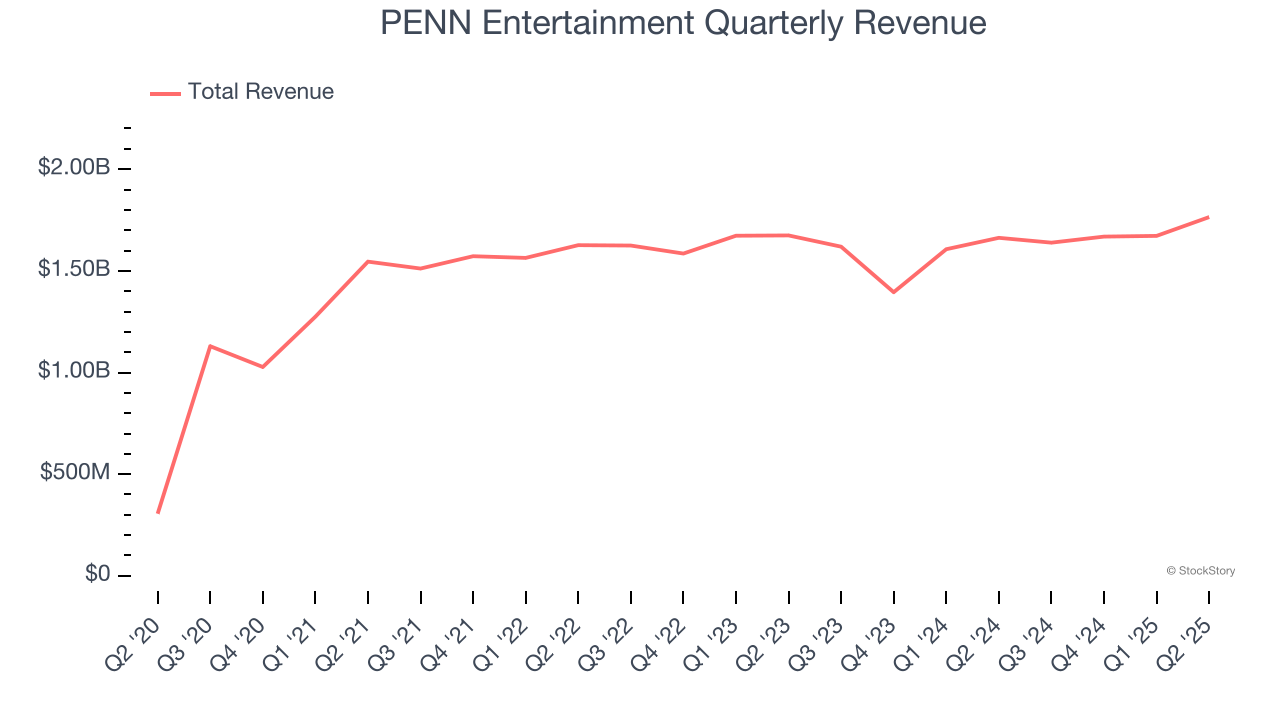
We at StockStory place the most emphasis on long-term growth, but within consumer discretionary, a stretched historical view may miss a company riding a successful new product or trend. PENN Entertainment’s recent performance shows its demand has slowed as its annualized revenue growth of 1.4% over the last two years was below its five-year trend. Note that COVID hurt PENN Entertainment’s business in 2020 and part of 2021, and it bounced back in a big way thereafter. 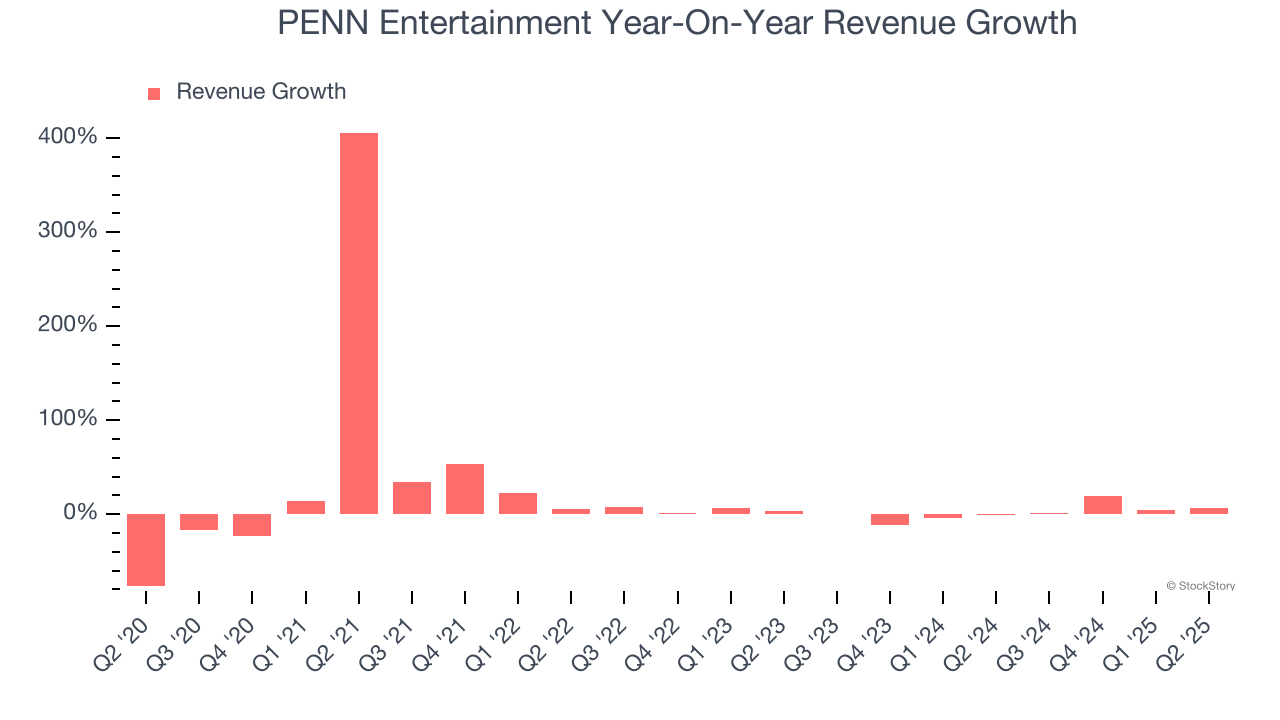
We can dig further into the company’s revenue dynamics by analyzing its most important segment, Northeast Region. Over the last two years, PENN Entertainment’s Northeast Region revenue (casinos, hotels) averaged 1.9% year-on-year growth. This segment has outperformed its total sales during the same period, lifting the company’s performance. 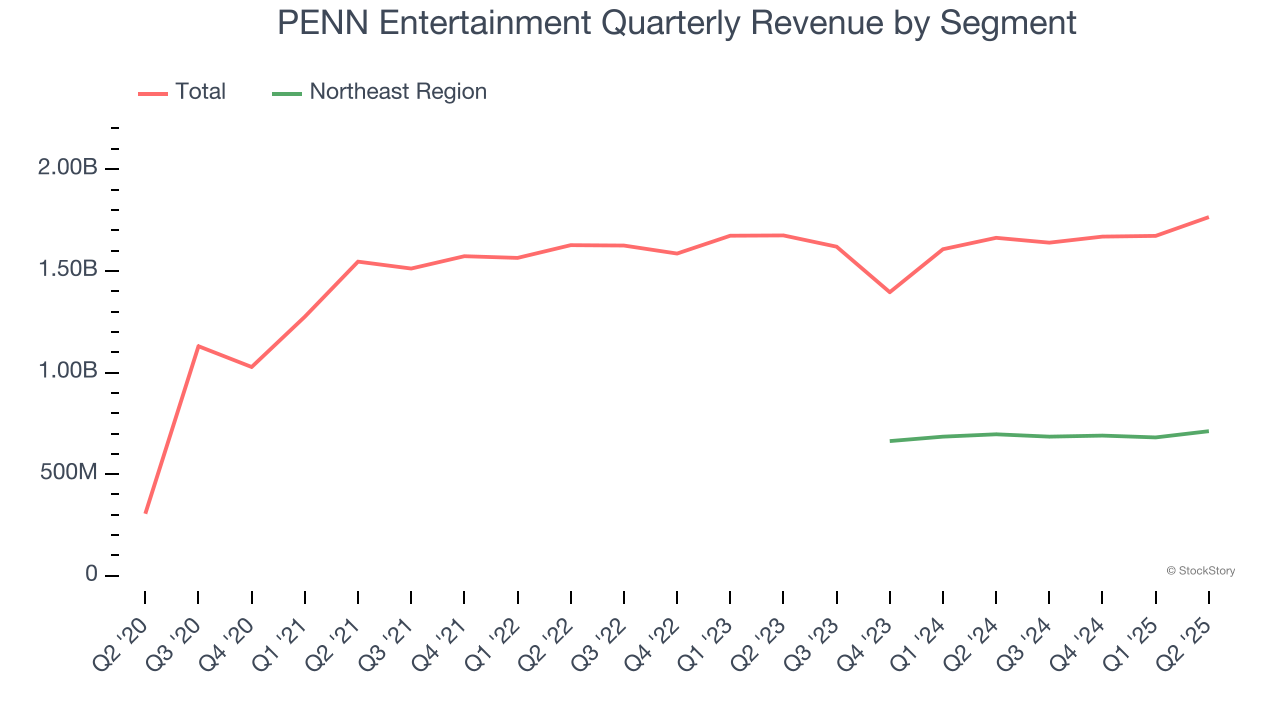
This quarter, PENN Entertainment reported year-on-year revenue growth of 6.1%, and its $1.77 billion of revenue exceeded Wall Street’s estimates by 1.9%.
Looking ahead, sell-side analysts expect revenue to grow 6.3% over the next 12 months. Although this projection implies its newer products and services will catalyze better top-line performance, it is still below the sector average.
Today’s young investors won’t have read the timeless lessons in Gorilla Game: Picking Winners In High Technology because it was written more than 20 years ago when Microsoft and Apple were first establishing their supremacy. But if we apply the same principles, then enterprise software stocks leveraging their own generative AI capabilities may well be the Gorillas of the future. So, in that spirit, we are excited to present our Special Free Report on a profitable, fast-growing enterprise software stock that is already riding the automation wave and looking to catch the generative AI next.
Operating Margin
Operating margin is an important measure of profitability as it shows the portion of revenue left after accounting for all core expenses – everything from the cost of goods sold to advertising and wages. It’s also useful for comparing profitability across companies with different levels of debt and tax rates because it excludes interest and taxes.
PENN Entertainment’s operating margin has risen over the last 12 months and averaged 2% over the last two years. The company’s higher efficiency is a breath of fresh air, but its suboptimal cost structure means it still sports inadequate profitability for a consumer discretionary business.
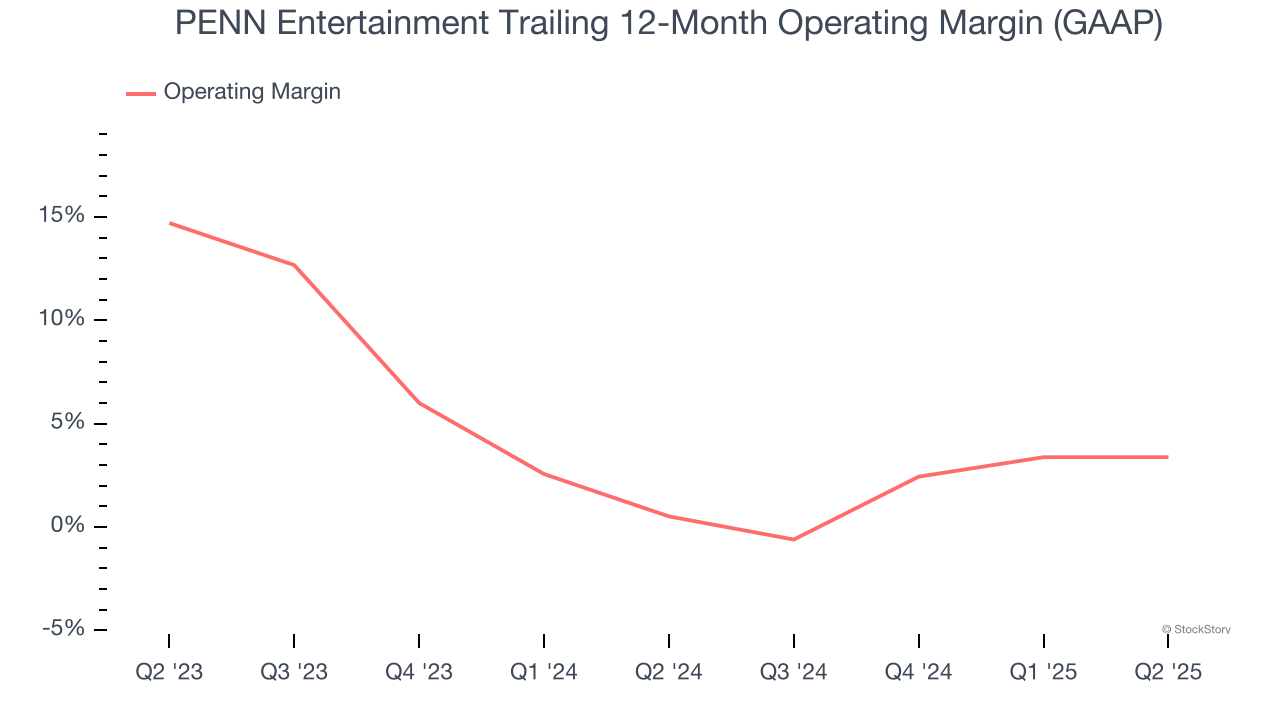
This quarter, PENN Entertainment generated an operating margin profit margin of 4.4%, in line with the same quarter last year. This indicates the company’s overall cost structure has been relatively stable.
Earnings Per Share
We track the long-term change in earnings per share (EPS) for the same reason as long-term revenue growth. Compared to revenue, however, EPS highlights whether a company’s growth is profitable.
Although PENN Entertainment’s full-year earnings are still negative, it reduced its losses and improved its EPS by 11.4% annually over the last five years. The next few quarters will be critical for assessing its long-term profitability.
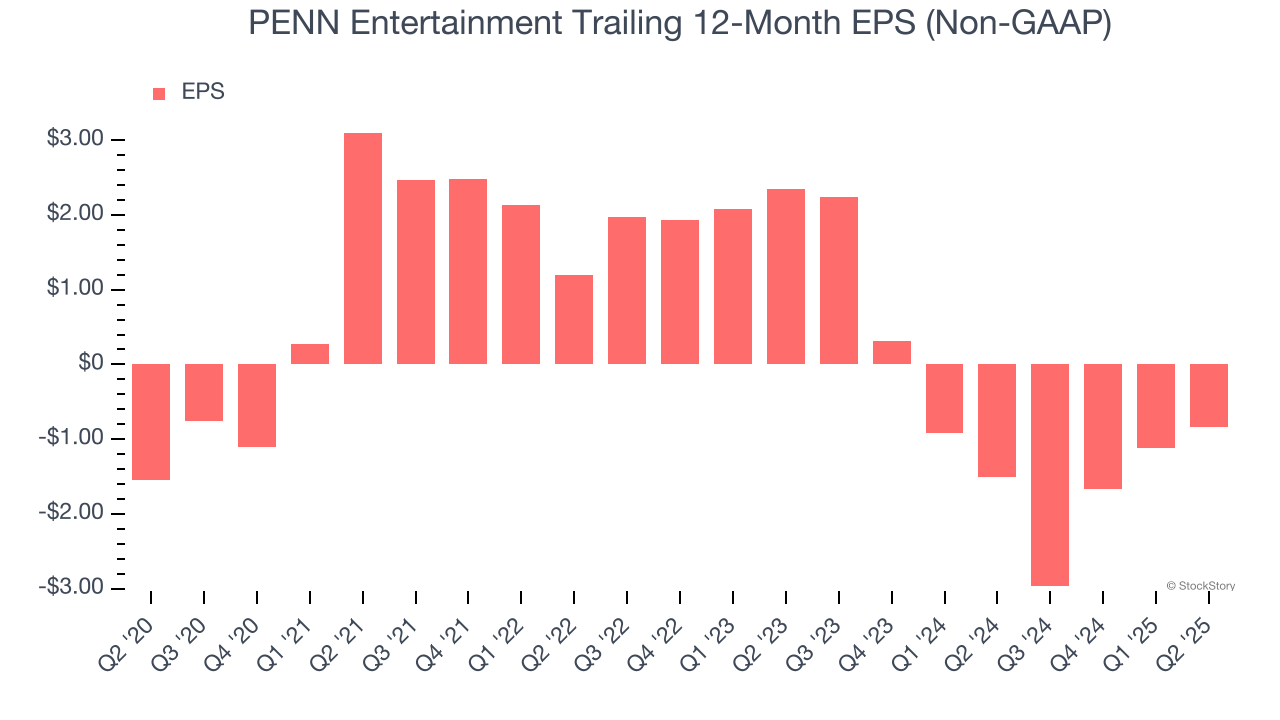
In Q2, PENN Entertainment reported adjusted EPS at $0.10, up from negative $0.18 in the same quarter last year. This print easily cleared analysts’ estimates, and shareholders should be content with the results. Over the next 12 months, Wall Street is optimistic. Analysts forecast PENN Entertainment’s full-year EPS of negative $0.84 will flip to positive $0.97.
Key Takeaways from PENN Entertainment’s Q2 Results
We were impressed by how significantly PENN Entertainment blew past analysts’ EPS expectations this quarter. We were also happy its revenue outperformed Wall Street’s estimates. On the other hand, its EBITDA missed. Zooming out, we think this was a mixed quarter. The stock remained flat at $16.88 immediately following the results.
Big picture, is PENN Entertainment a buy here and now? We think that the latest quarter is only one piece of the longer-term business quality puzzle. Quality, when combined with valuation, can help determine if the stock is a buy. We cover that in our actionable full research report which you can read here, it’s free.






